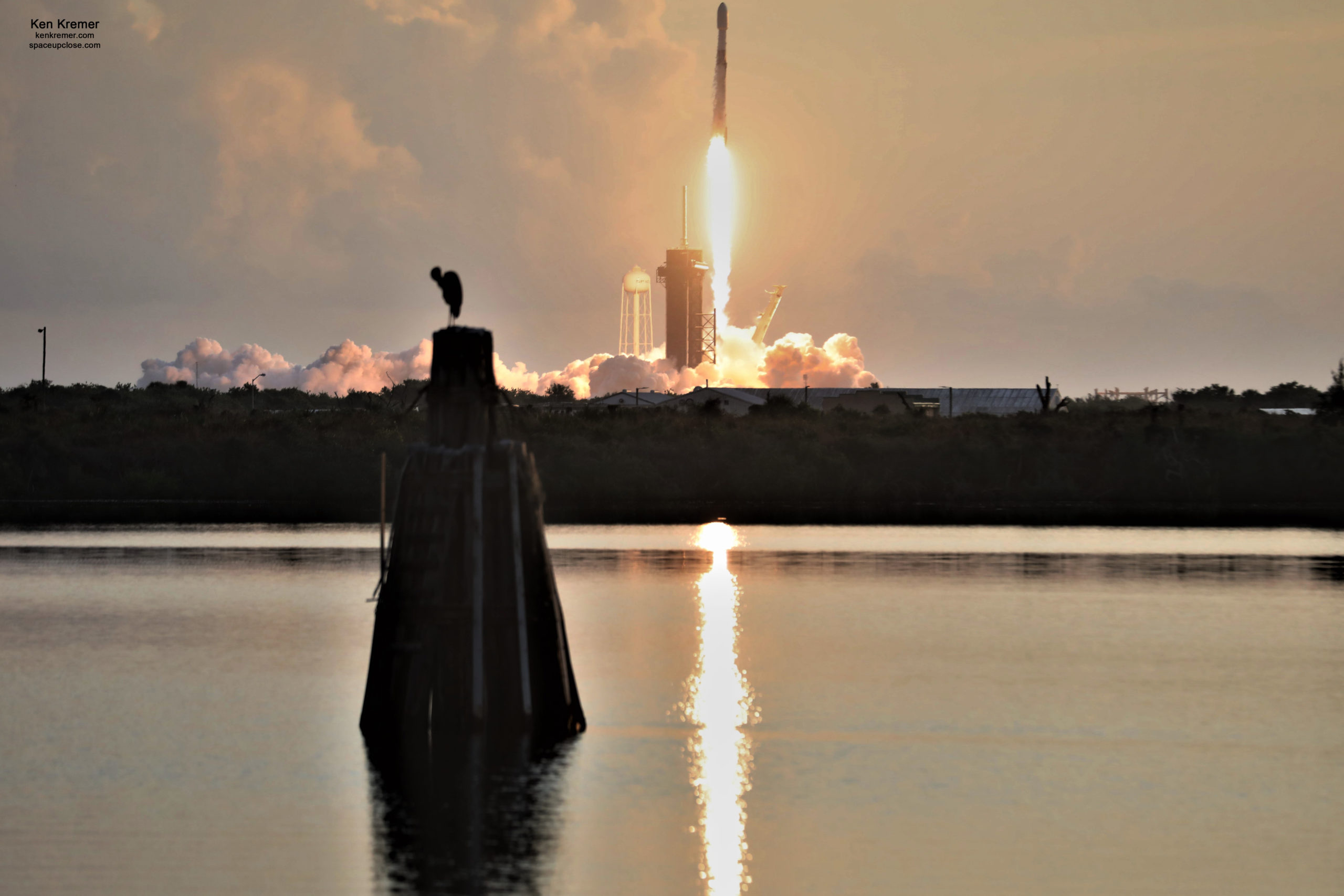
For SpaceUpClose.com & RocketSTEM
KENNEDY SPACE CENTER, FL – Scrub Streak Broken! The seemingly endless and unprecedented series of Florida Space Coast launch scrubs by both SpaceX and ULA for more than a month and given names such as ‘Scrubitis’, ‘Scrubtober’, “Scrubtoberfest’ or ‘Scrubtember’ – mostly for technical reasons – has at last ended with a spectacular sunrise blastoff Tuesday morning of a SpaceX Falcon 9 carrying 60 Starlink internet satellite to orbit from the Kennedy Space Center.
And it was touch and go with threatening weather as rains storm inundated the Cape less than an hour before launch.
At last the rain clouds cleared, crowds collectively cheered and the sadly repetitive time-loop dream of the hit movie ‘Groundhog Day’ halted at last as the 1st stage Merlin rocket engines ignited and Falcon 9 soared proudly to space.
Liftoff of the 23 story tall single stick recycled SpaceX Falcon 9 on the 13th mission carrying Starlink broadband internet satellites took place during the instantaneous window at 7:29 a.m. EDT (1129 GMT) Tuesday morning, Oct. 6 from Launch Complex-39A on NASA’s Kennedy Space Center – just a few minutes after sunrise.
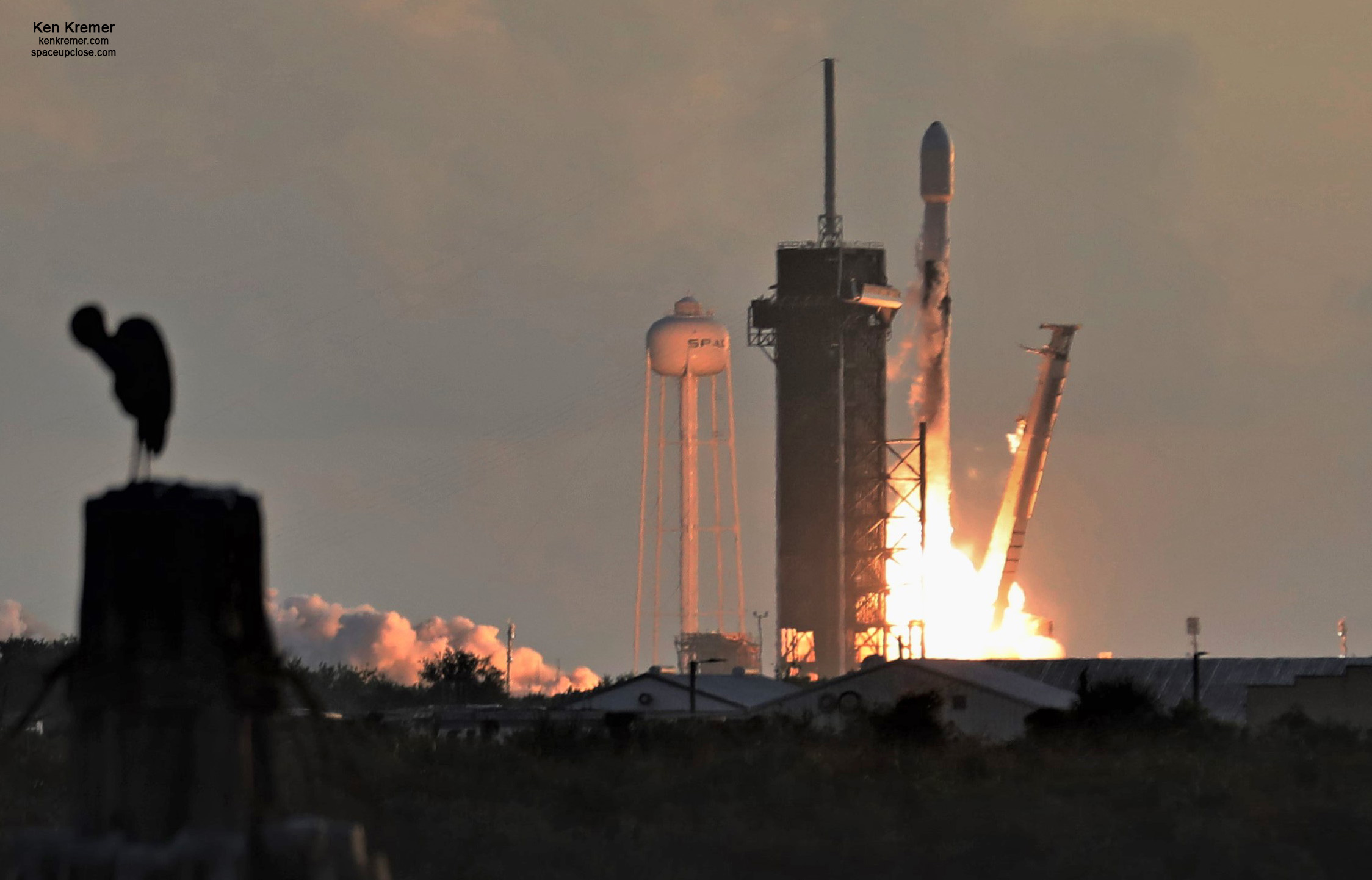
Loaded with LOX and HH2 propellants all none Falcon 9 Merlin 1D first stage engines on flight- proven booster B1058.3 ignited to generate 1.7 million pounds of liftoff thrust and roared off pad 39A with crackling thunder into a mostly cloud free sky that luckily cleared in the final minutes – heading northeasterly with a packed nose cone of Starlink broadband satellites.
‘With that, we hope you have a wonderful end of your day and a happy end to Scrubtober,” said SpaceX engineer Siva Bharadvaj, towards the conclusion of the SpaceX live launch webcast.
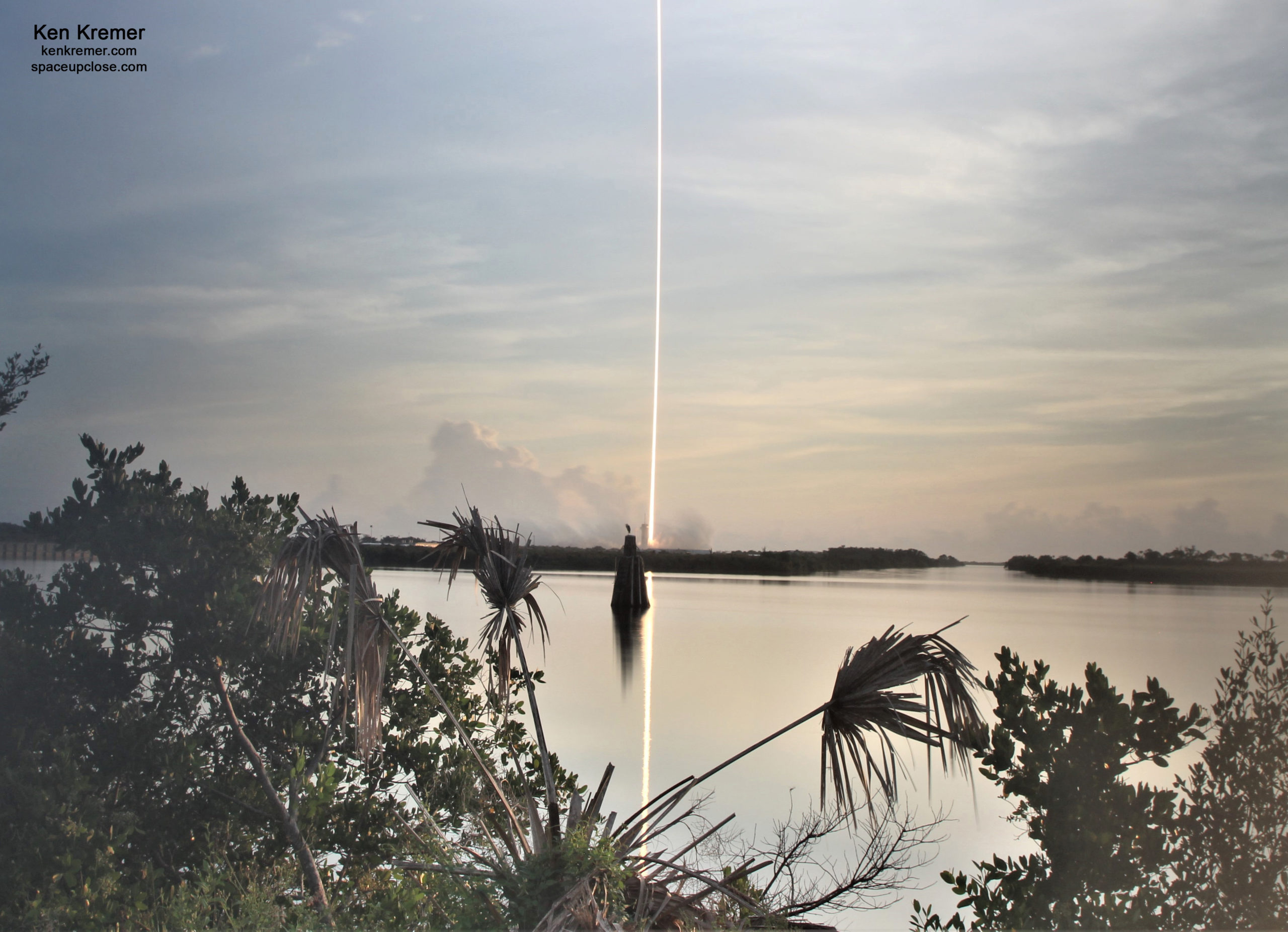
Overall this was the fourth launch attempt for this mission due to rocket, ground system and weather issues. In fact this launch was also scrubbed yesterday, Monday, due to torrential downpours and thunder in the region.
We are standing down from today's Starlink mission due to weather violations on the Range. The team is setting up for a launch opportunity tomorrow at 7:29 a.m. EDT; weather forecast is 70% favorable for liftoff
— SpaceX (@SpaceX) October 5, 2020
Enjoy our Space UpClose gallery of launch and prelaunch images from the KSC press site from the team of Ken Kremer and Jean Wright.
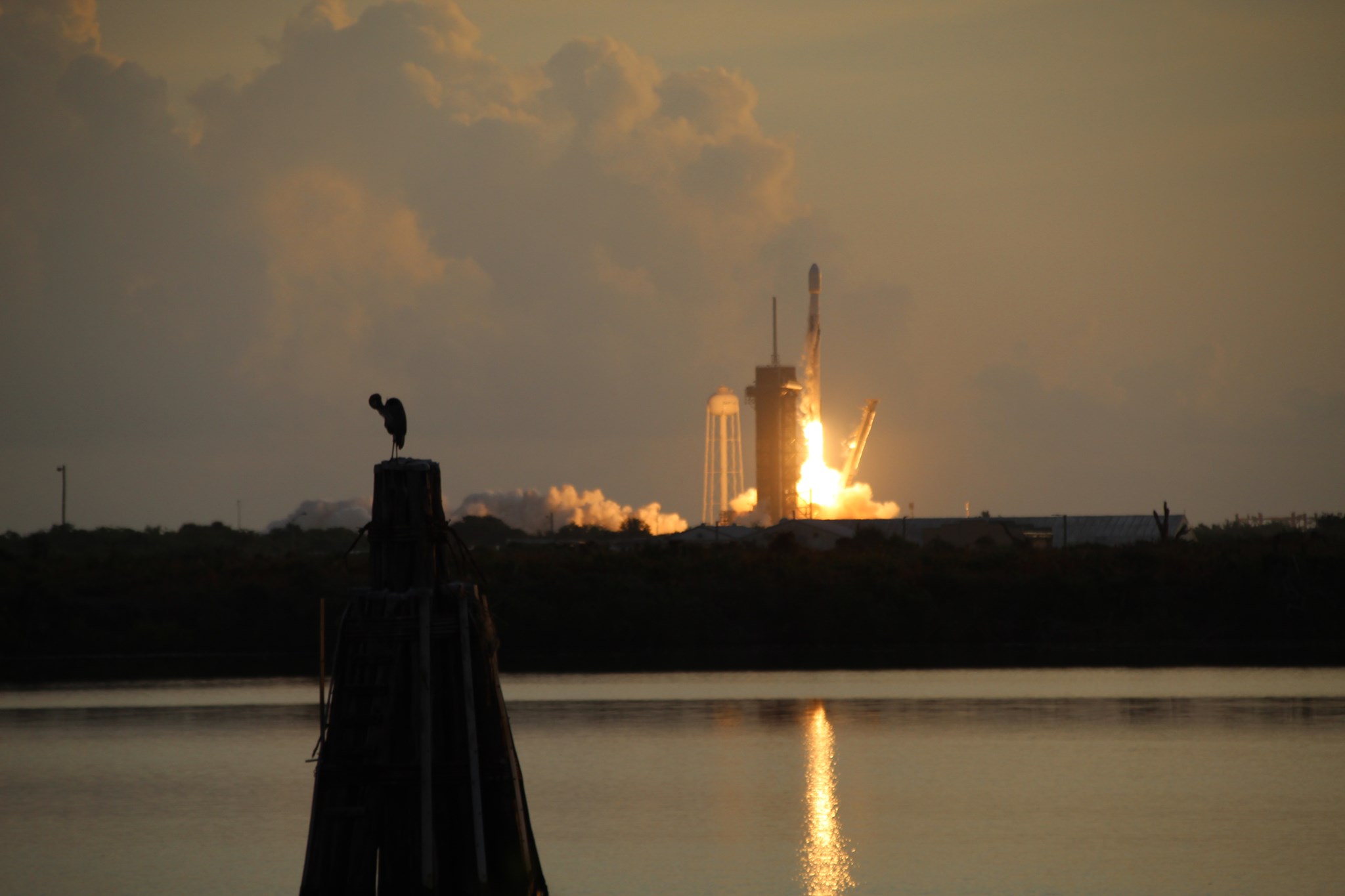
At least for today Space Coast ‘Scrubitis’ was temporarily ‘cured.’
Overall this marked the 43rd flight of a reflown 1st stage booster.
Altogether SpaceX has landed successfully 61 flown boosters by land or by sea.
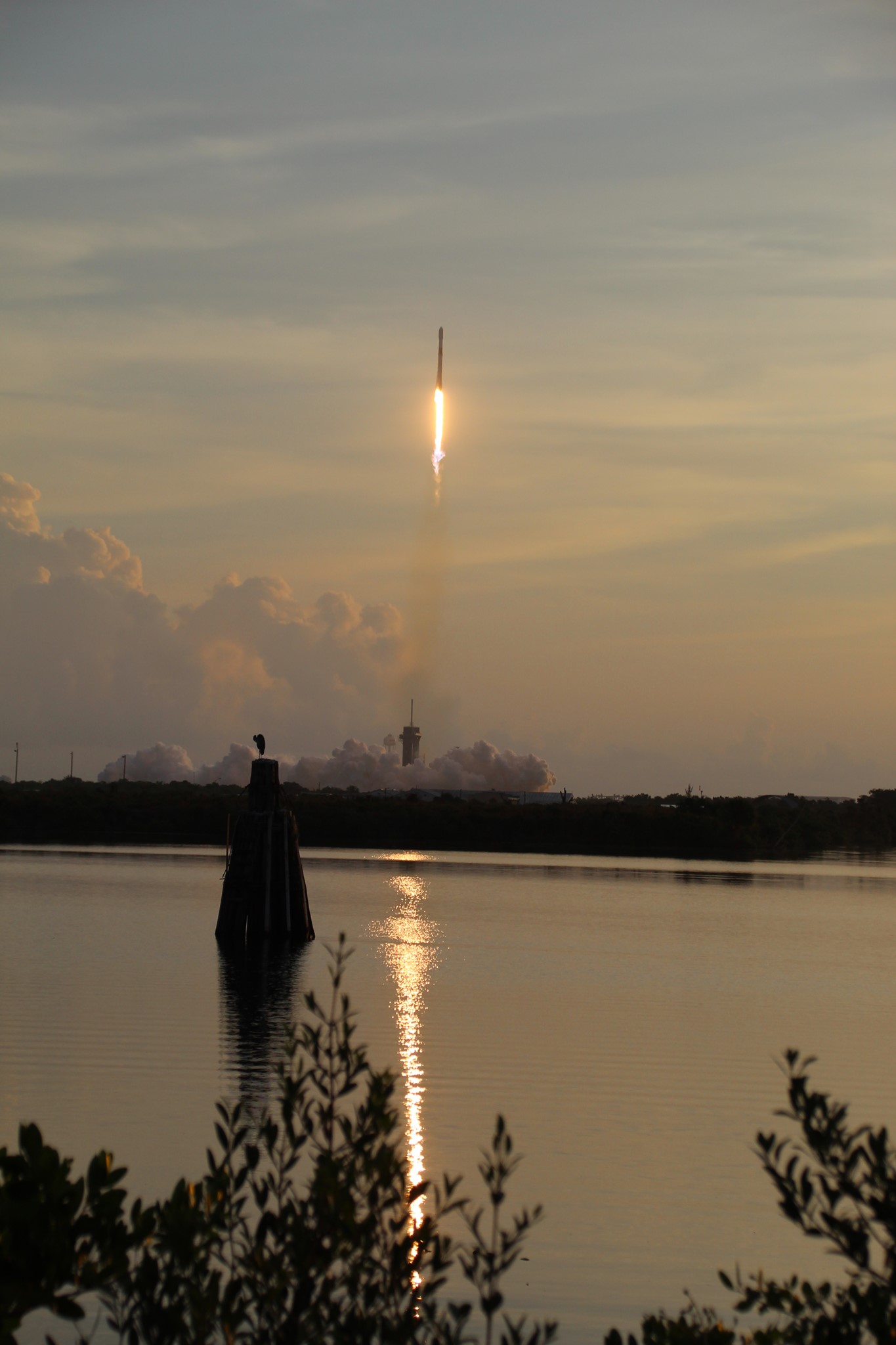
“Falcon 9 launches 60 Starlink satellites to orbit, completing SpaceX’s 43rd flight of a previously flown rocket booster,” SpaceX tweeted.
Falcon 9 launches 60 Starlink satellites to orbit, completing SpaceX's 43rd flight of a previously flown rocket booster pic.twitter.com/QHPxX1sac2
— SpaceX (@SpaceX) October 6, 2020
The Starlink mission was part of triple header of endlessly entangled 3 in a row rocket launches bunched up back to back and scrubbed repeatedly many times precisely because the they were repeatedly scheduled tightly together – a day or even as little as only 9 hours apart.
Thus when the first one in line delayed it frequently resulted in delays to the other two missions – hence the origin of nicknames like ‘Scrubitis’ and ‘Scrubtober.’
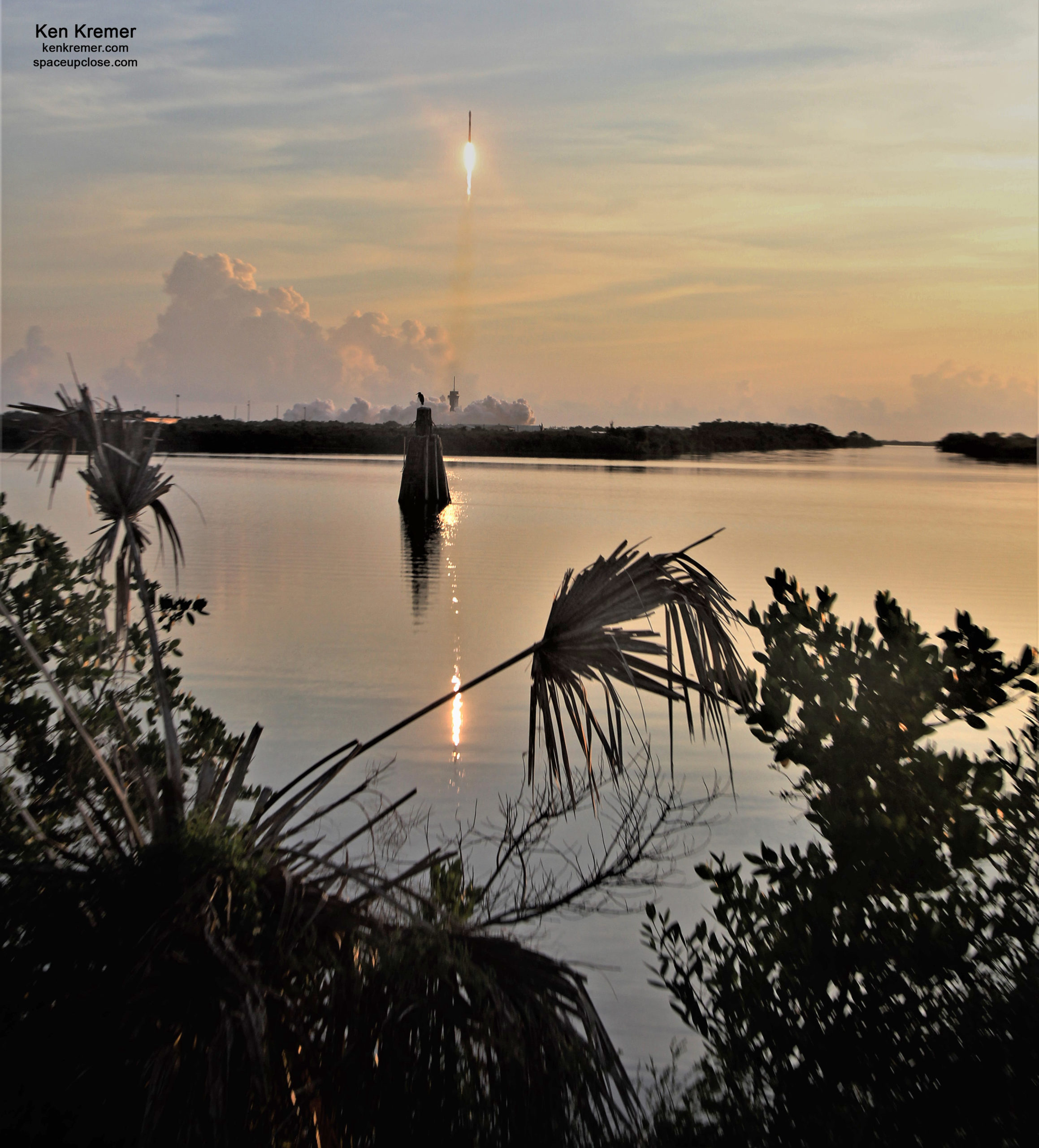
The rocket trio from America’s premier rocket companies ULA and SpaceX comprised one triple core ULA Delta IV Heavy and two single core SpaceX Falcon 9s blasting off on 3 different nearly launch pads from Cape Canaveral Space Force Station and NASA’s Kennedy Space Center.
It should be noted that the oft scrubbed ULA Delta IV Heavy launch of the NROL 44 spysat for the NRO and other Falcon 9 on the GPS III SV04 mission for the United States Space Force remain on indefinite holds due to rocket and ground system issues
This ‘flight-proven’ Falcon 9 first stage booster B1058.3 roared off pad 39A for the third time on missions to space and back.
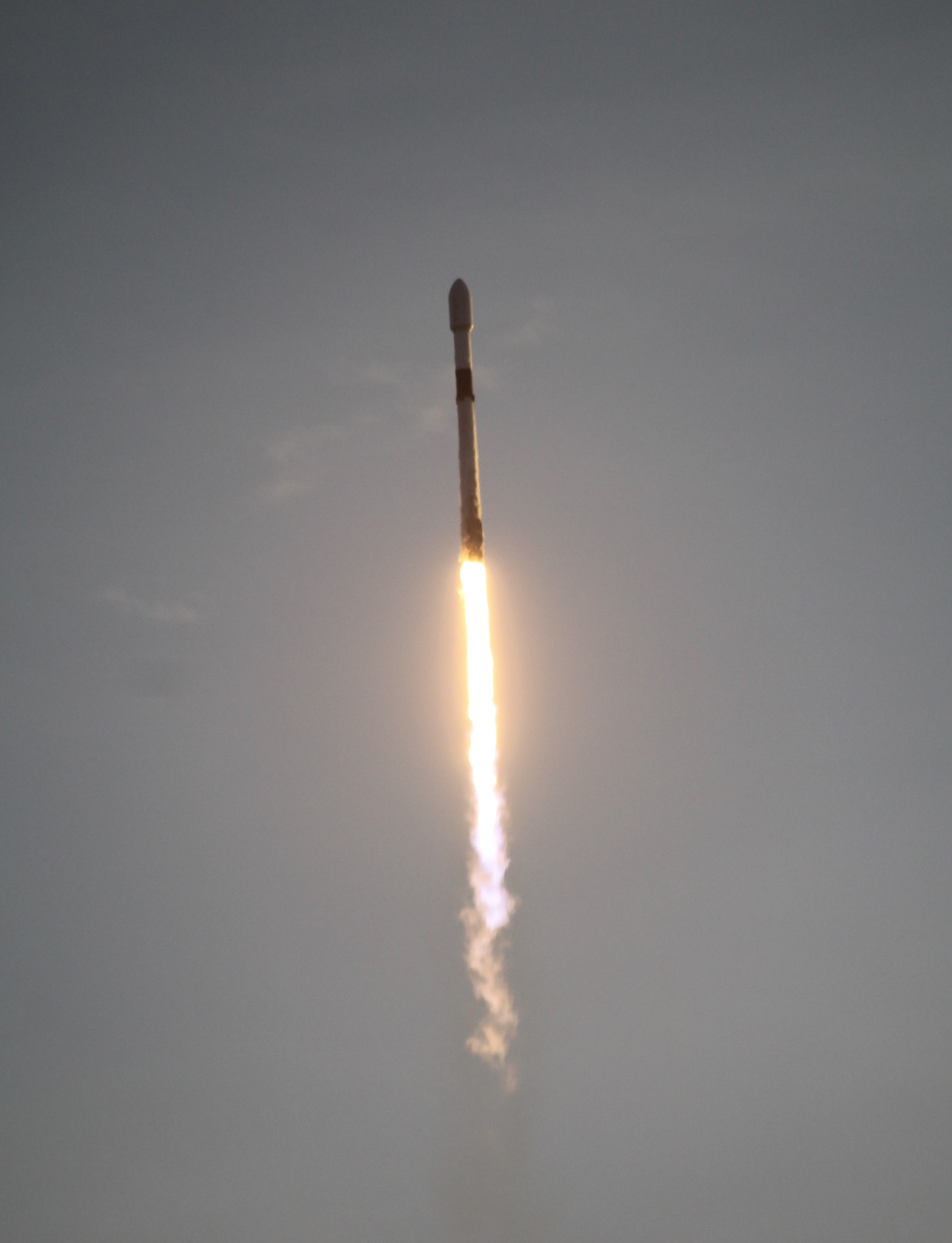
In addition to a successful launch and after stage separation the booster accomplished another precision guided propulsive descent and safely touched down on the ‘Of Course I Still Love You (OCISLY) ocean going droneship platformsome eight and a half minutes after liftoff.
“Falcon 9’s first stage has landed on the Of Course I Still Love You droneship,” SpaceX tweeted with a confirmation video.
Falcon 9’s first stage has landed on the Of Course I Still Love You droneship pic.twitter.com/Jpkeiw9dIn
— SpaceX (@SpaceX) October 6, 2020
Droneship OCISLY was already waiting at its stationing position some 400 mi (640 km) north east of KSC off the coast of the Carolina’s with a football field sized landing platform.
SpaceX has also dispatched its fleet of payload fairing catcher boats GO Ms. Tree and GO Ms. Chief to try and catch and retrieve both nose cone halves from the mission.
Falcon 9’s first stage previously supported launch of Crew Dragon’s first flight to the International Space Station on May 30 on the Demo-2 mission with NASA astronauts Bob Behnken and Doug Hurley onboard and the ANASIS-II commercial communications satellite mission on July 20.
As such the booster still features the NASA Worm logo on the side from the Demo-2 mission.
The Starlink satellites were successfully deploy approximately 1 hour and 1 minute after liftoff.
As such the ever expanding Starlink constellation will rise to about 773 launched satellites.
The flat panel, refrigerator sized broadband internet relay satellites launched to orbit are aimed at serving rural and underserved areas across the globe – where service is “unreliable, expensive, or completely unavailable.”
There were no rideshare payloads on this flight – thus the full complement of 60 Starlinks was stowed aboard as payload and encapsulated inside the nose cone.
“Deployment of 60 Starlink satellites confirmed,” SpaceX tweeted with a video.
Deployment of 60 Starlink satellites confirmed pic.twitter.com/x83OvjB4Pa
— SpaceX (@SpaceX) October 6, 2020
“Once these satellites reach their target position, we will be able to roll out a fairly wide public beta in northern US & hopefully southern Canada. Other countries to follow as soon as we receive regulatory approval,” SpaceX CEO Elon Musk tweeted in response.
Once these satellites reach their target position, we will be able to roll out a fairly wide public beta in northern US & hopefully southern Canada. Other countries to follow as soon as we receive regulatory approval.
— Elon Musk (@elonmusk) October 6, 2020
SpaceX says you can sign up to receive updates on Starlink news and service availability in your area. Please visit starlink.com.
The mission also utilized a recycled nose cone half for the second time.
In addition to dispatching both droneships, SpaceX deployed both payload fairing catcher ships: GO Ms Tree and GO Ms Chief.
SpaceX reported that the crew aboard GO Ms Tree was able to successfully catch that reused fairing.
Overall it was the 6th successful catch of a nose cone half by GO Ms Tree.
“Ms. Tree caught the fairing half that flew in support of two previous missions!” SpaceX tweeted with a video.
Ms. Tree caught the fairing half that flew in support of two previous missions! pic.twitter.com/p61bdBrdRP
— SpaceX (@SpaceX) October 6, 2020
Starlink services are already being used in some remote area such as Washington State.
The Washington Emergency Department announced on Sept 28 that they were using the Starlink internet service for emergency responders and residents in Malden, Washington, seeking to recover from devastating wildfires earlier this month that destroyed much of the town.
“Happy to have the support of @SpaceX’s Starlink internet as emergency responders look to help residents rebuild the town of Malden, WA that was overcome by wildfires earlier this month. #wawildfire,” the Washington Emergency Department tweeted.
“Glad SpaceX could help! We are prioritizing emergency responders & locations with no Internet connectivity at all,” SpaceX CEO Elon Musk tweeted in response.
“Starlink will be a revolution in connectivity, especially for remote regions or for emergency services when landlines are damaged.”
Glad SpaceX could help! We are prioritizing emergency responders & locations with no Internet connectivity at all.
— Elon Musk (@elonmusk) September 28, 2020
Regarding the many scrubs – the CEO’s of both companies namely SpaceX CEO Elon Musk and ULA CEO Tory Bruno plan to fully investigate what is going on and causing most of these scrubs.
Musk himself acknowledges it will take a lot of hard work and changes in operating procedures to achieve the goal of 48 launches per year outlines by the 45th Space Wing at Cape Canaveral Space Fore Station.
We will need to make a lot of improvements to have a chance of completing 48 launches next year!
— Elon Musk (@elonmusk) October 3, 2020
Elon Musk is personally visiting the Cape this next week to review the situation with his team and inspect the hardware in person.
“All of that and more. We’re doing a broad review of launch site, propulsion, structures, avionics, range & regulatory constraints this weekend. I will also be at the Cape next week to review hardware in person,” SpaceX CEO Elon Musk tweeted in response to questions about the launch cadence and scrubs.
All of that and more. We’re doing a broad review of launch site, propulsion, structures, avionics, range & regulatory constraints this weekend. I will also be at the Cape next week to review hardware in person.
— Elon Musk (@elonmusk) October 3, 2020
The two stage Falcon 9 rocket stands 229 feet (70 meters) tall.
Watch my prelaunch commentary at WESH 2 NBC News and WKMG CBS 6 New Orlando on Oct. 5/6 about SpaceX CEO Elon Musk visit to the Cape to determine cause of so many launch scrubs.
https://www.wesh.com/article/spacex-delays-elon-musk-cape-canaveral/34271894
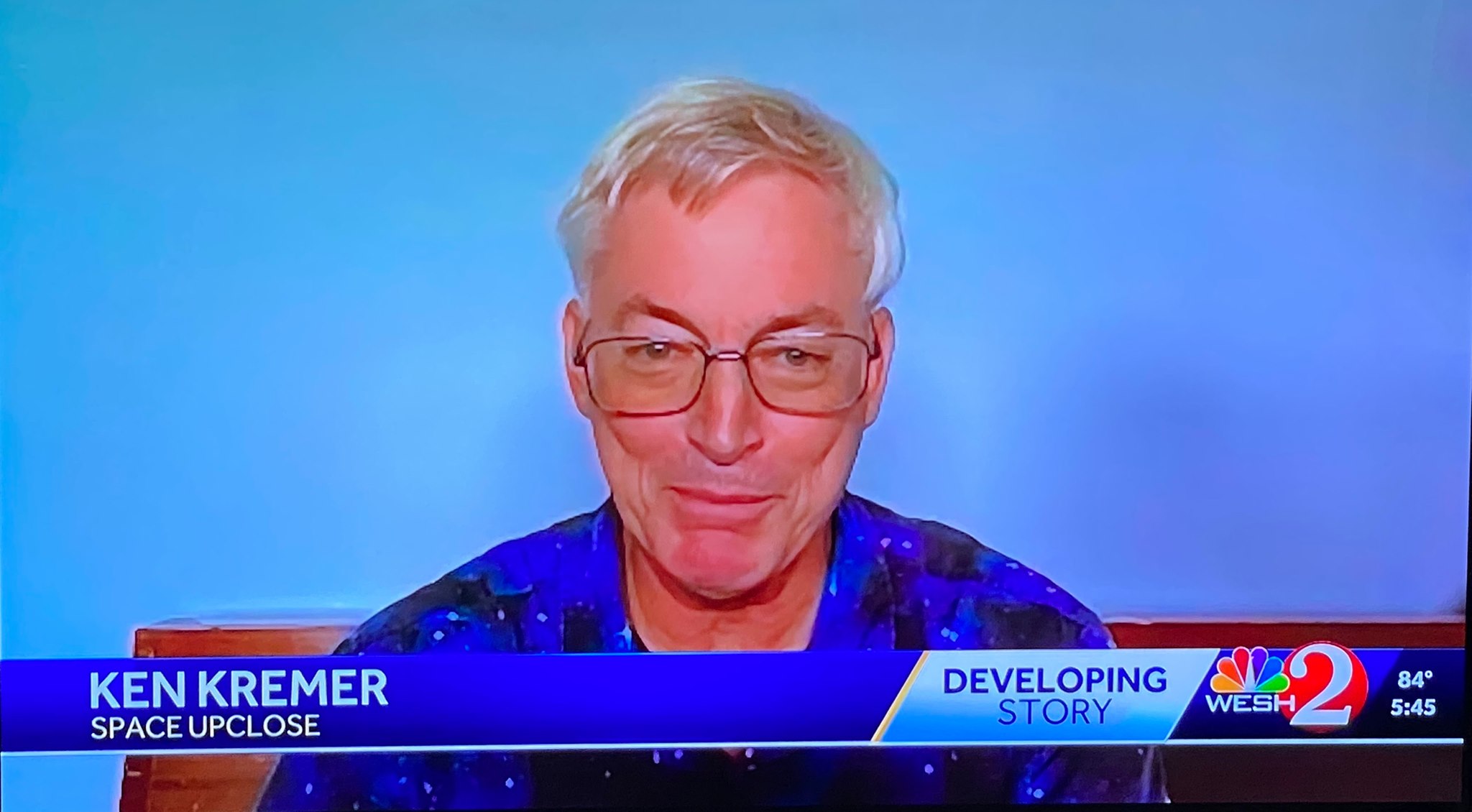
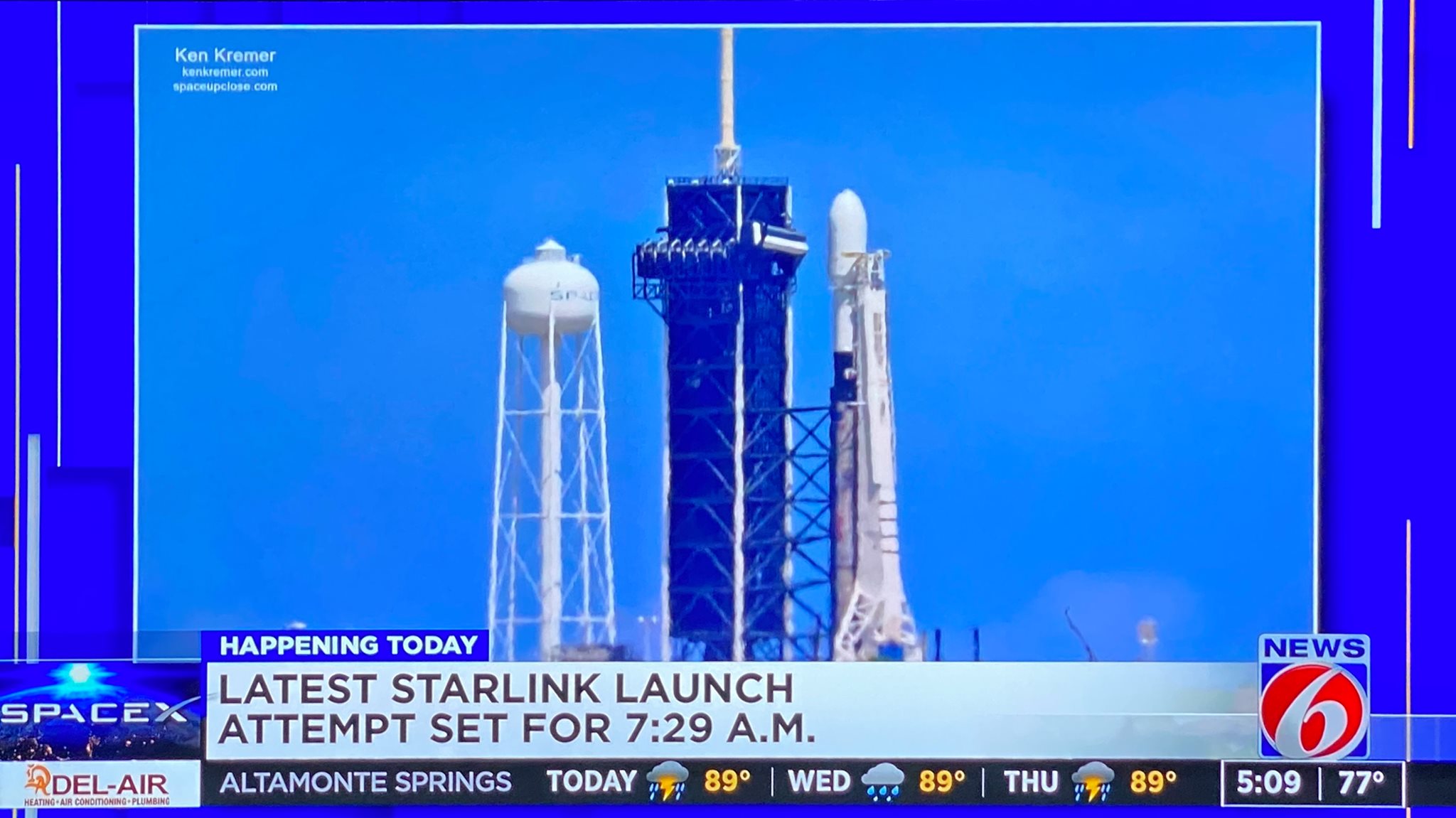
Credit: Ken Kremer/kenkremer.com/spaceupclose.com
Watch my SpaceX GPS post scrub commentary at Fox 35 News Orlando on Oct. 3
https://www.fox35orlando.com/video/857194
“They need to stand back. They need to rethink. They need to look at all of their procedures and that’s why Musk is coming here for. He’s going to do a thorough review,” I explained to Fox 35 about the many launch scrubs.
“We hope the weather is good, but we have no control over the weather. But they have plenty of control over the rocket and the pad to make sure they’re in order.”
Watch my commentary at WFTV Channel 9 ABC TV News Orlando in this Sept. 25/26 report about 3 upcoming Space Coast launches in 3 days by ULA and SpaceX.
Also Fox 35 TV News Orlando on Sep 28/29 about the impact of scheduling so many back to back launches and impact of repeated launch scrubs.
Watch my live interview discussion of current space missions and launches on Sept. 18 edition of ‘Stay Curious’ daily space show presented by the American Space Museum, Titusville, FL.
https://www.facebook.com/175507880819/videos/1058636561206413
Watch Ken’s continuing reports about Starlink, Commercial Crew and Artemis and onsite for live reporting of upcoming and recent SpaceX and ULA launches including Demo-2, Starlink, X-37B, Solar Orbiter, Mars 2020 and more at the Kennedy Space Center and Cape Canaveral Space Force Station.
Stay tuned here for Ken’s continuing Earth and Planetary science and human spaceflight news: www.kenkremer.com –www.spaceupclose.com – twitter @ken_kremer – email: ken at kenkremer.com
Dr. Kremer is a research scientist and journalist based in the KSC area, active in outreach and interviewed regularly on TV and radio about space topics.
………….
Ken’s photos are for sale and he is available for lectures and outreach events
Please consider supporting Ken’s work by donating at Patreon:
https://www.patreon.com/kenkremer
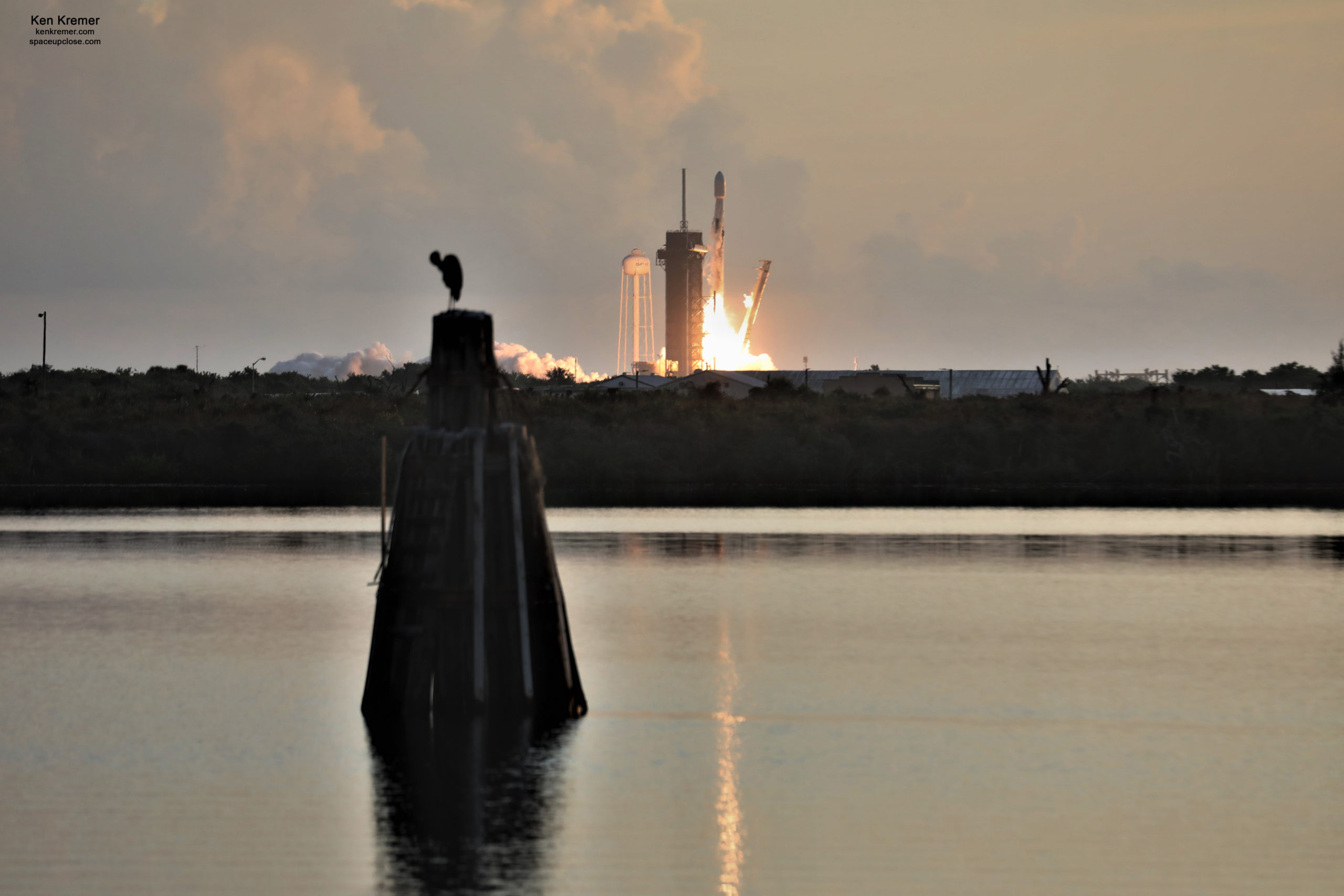
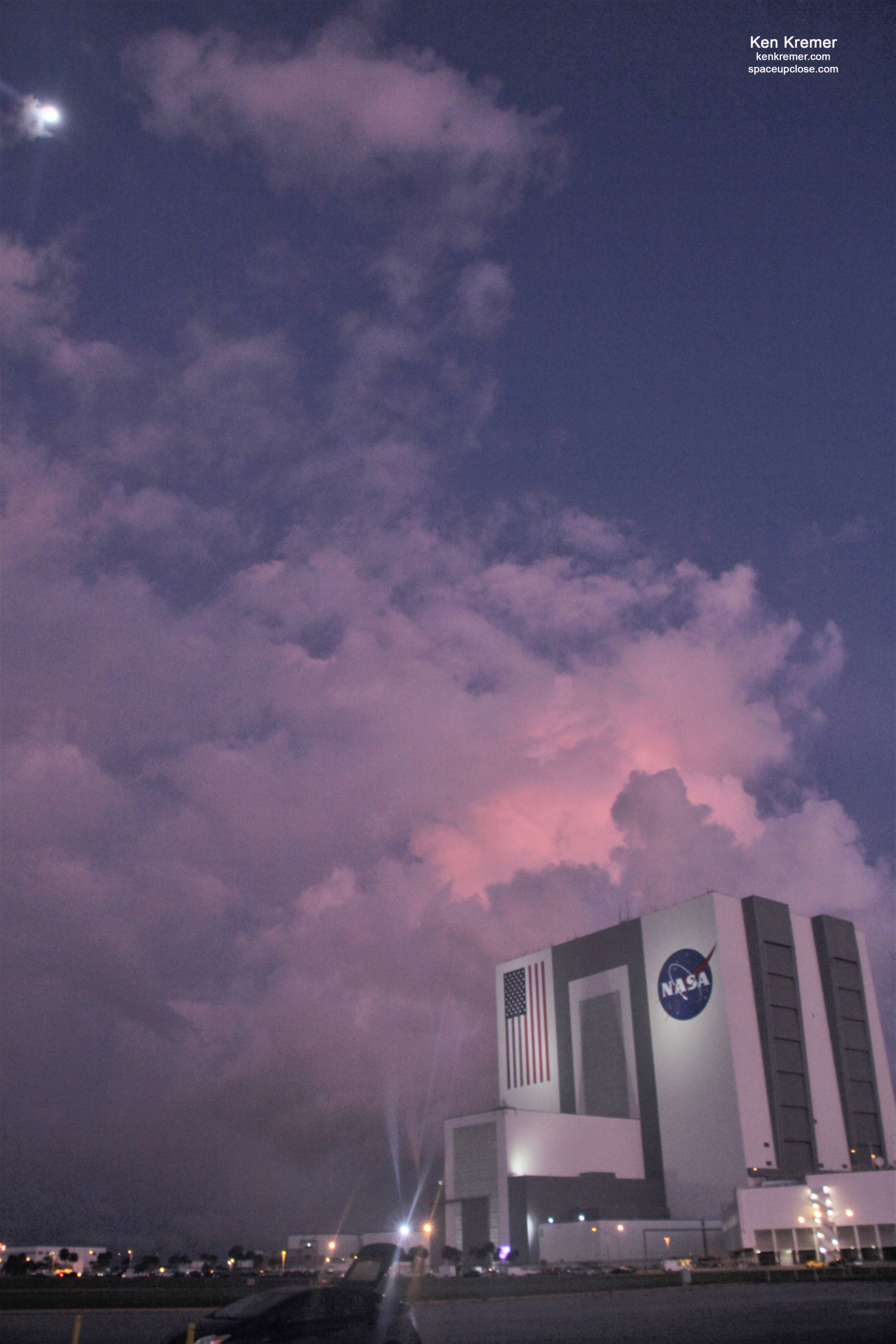
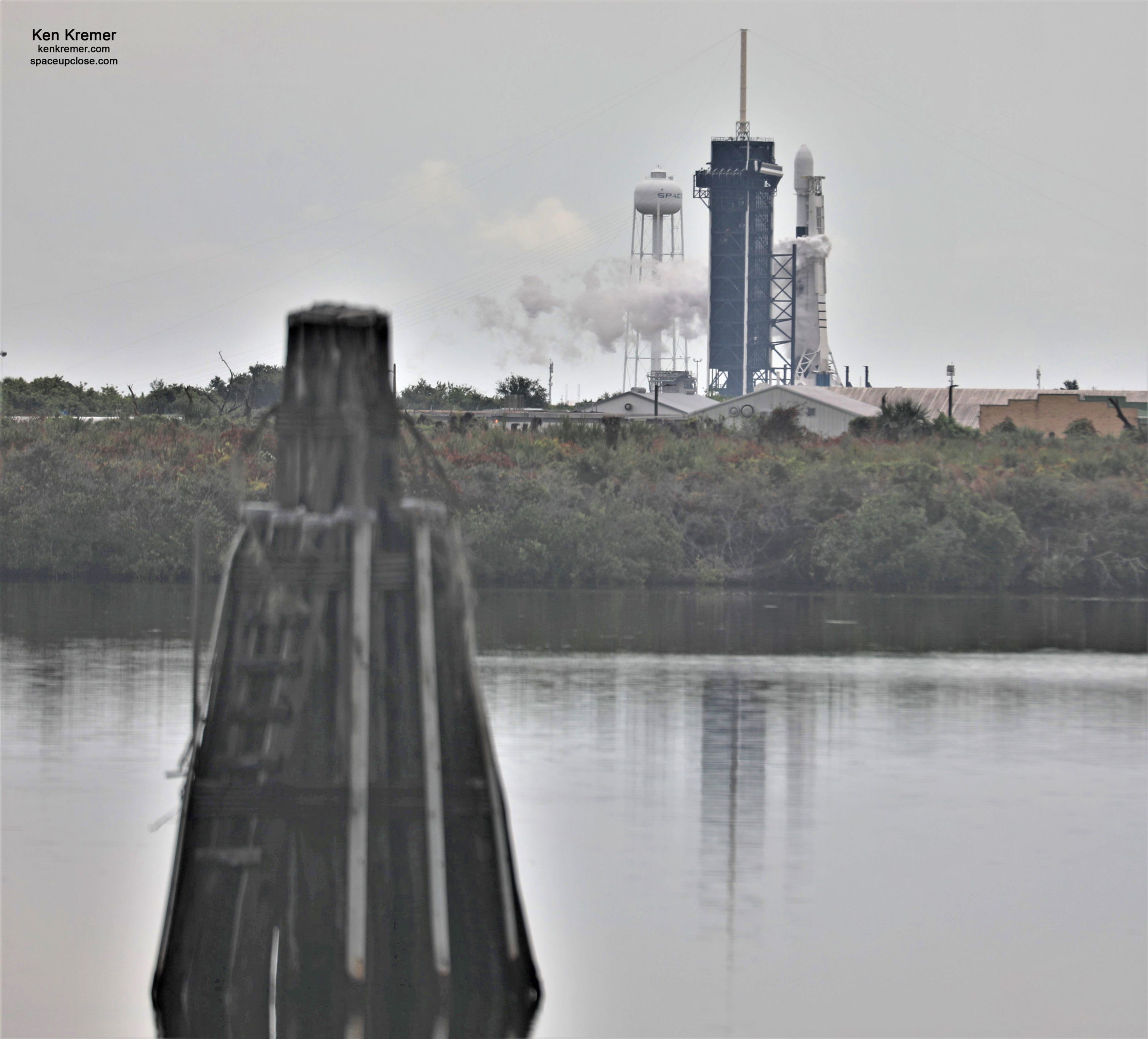
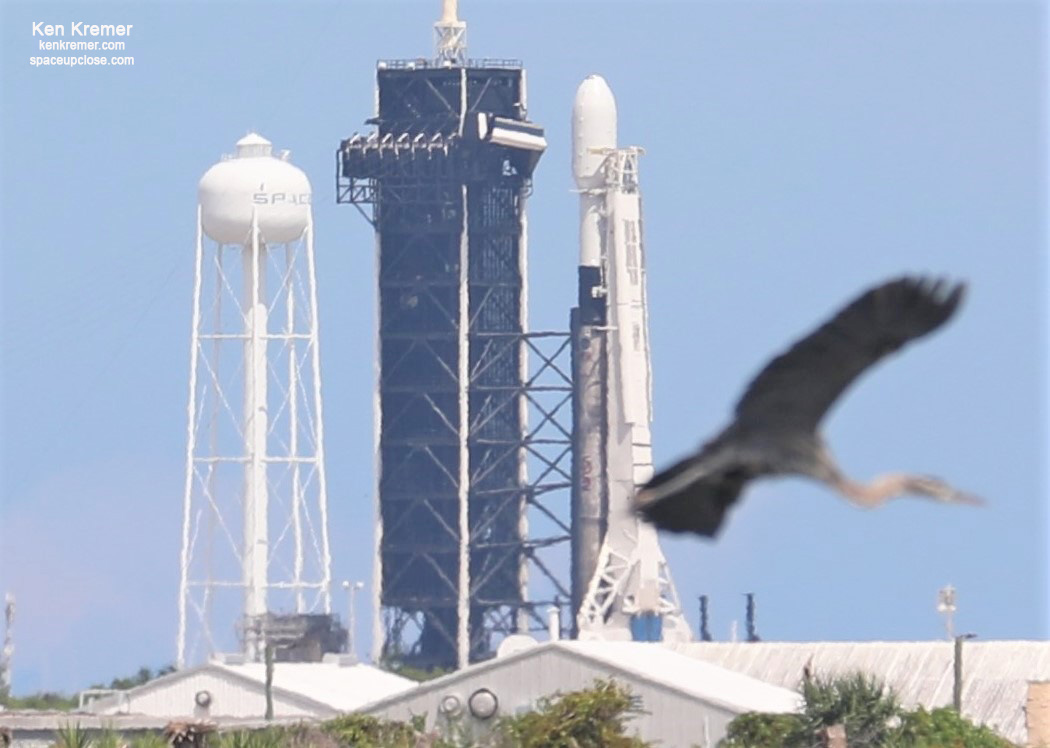
x



